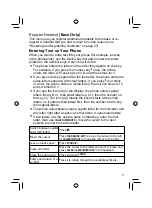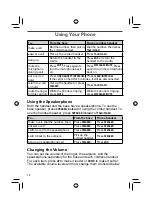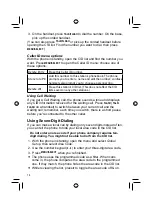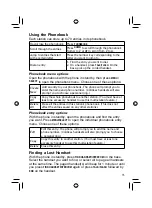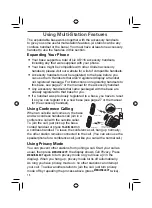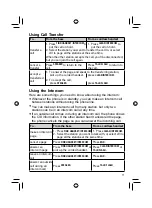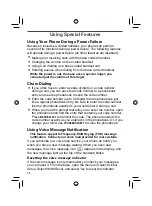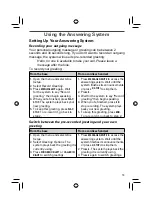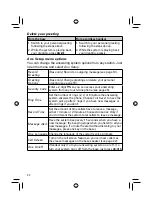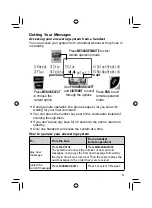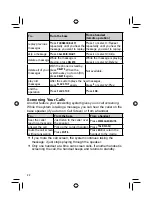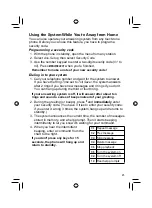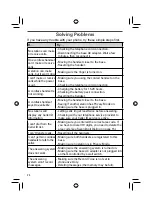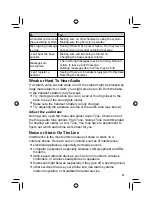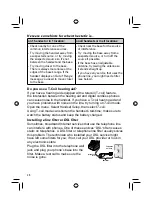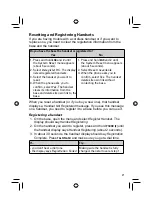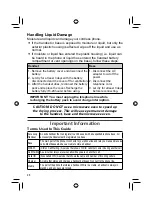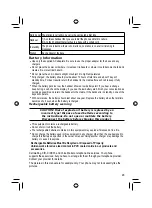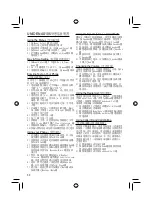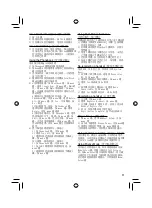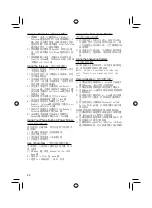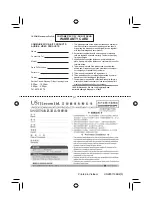
25
If…
Try…
A handset can't access
the answering system.
-
Making sure no other handset is using the system.
-
Making sure the phone is in standby.
My outgoing message
is gone.
-
Seeing if there was a power failure. You may have to
re-record your personal outgoing message.
I can’t hear the base
speaker.
-
Making sure call screening is turned on.
-
Changing the base speaker volume.
Messages are
incomplete.
-
The incoming messages may be too long. Remind
callers to leave a brief message.
-
Deleting messages (the memory may be full).
I can't register a
handset.
-
Seeing if there are 6 handsets registered to this base.
-
Resetting the handset.
Weak or Hard To Hear Audio
If a caller’s voice sounds weak or soft, the signal might be blocked by
large metal objects or walls; you might also be too far from the base,
or the handset’s battery may be weak.
Try moving around while you’re on a call or moving closer to the
base to see if the sound gets louder.
Make sure the handset’s battery is fully charged.
Try adjusting the earpiece volume or the audio tone (see below).
Adjust the audio tone
During a call, open the menu and select
Audio Tone
. Choose one of
the three audio tone options:
High Tone
,
Natural Tone
(recommended
for hearing aid users), or
Low Tone
. You may have to experiment to
figure out which audio tone works best for you.
N oise or Static On The Line
Interference is the most common cause of noise or static on a
cordless phone. Here are some common sources of interference:
electrical appliances, especially microwave ovens
computer equipment, especially wireless LAN equipment and DSL
modems
radio-based wireless devices, such as room monitors, wireless
controllers, or wireless headphones or speakers
fluorescent light fixtures (especially if they give off a buzzing noise)
other services that use your phone line, like alarm systems,
intercom systems, or broadband Internet service

